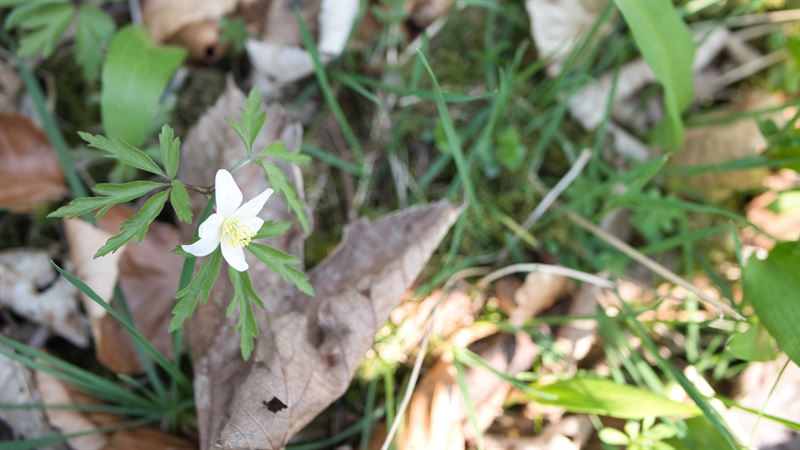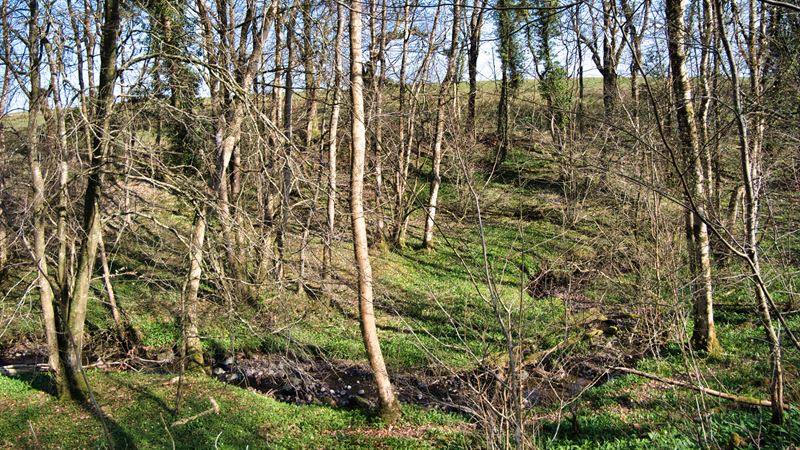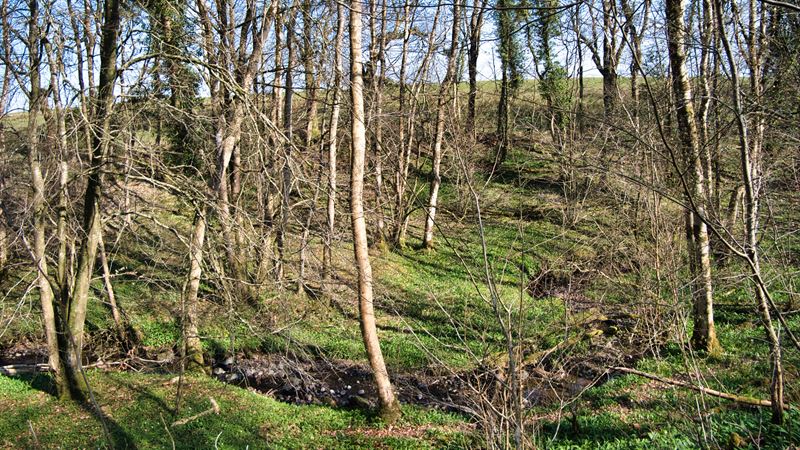Thornthwaite hall
Small Holding near Wigton NW Cumbria
Jamie visited this spot some years ago and was keen to return and see what impact had been made by fencing off a small area of riparian woodland.
The land, in the northwest of Cumbria near Wigton is approx XXX hectares most of which is grazed by sheep. There are, however, 3 to 4 hectares of ancient woodland which, importantly are riparian, steep-sided and very flora-rich. This woodland is in stark contrast to the surrounding pasture which is somewhat more sparse when it comes to flora!
Historically the woodland has been fenced off from the grazing but the sheep still had access to some of the woodland fringes. A particular area of that riparian woodland fringe which protruded into the grazing was fenced off 15 years previously.
With grazing the flora had been forced back into the existing woodland and remained close to the stream. With the removal of the grazing pressure, the flora has started to migrate outwards slowly from the stream towards the fence line.

This site gives the opportunity to observe riparian ancient woodland that is in 'good' health alongside a piece of woodland that is recovering due to the simple intervention of fencing/exclusion 15 years ago.
We can now see the migration of flora from the well-established riparian woodland below, up into this more recently fenced area.
Essentially this stream and the fenced area is recovering quickly due to its connectivity to the healthy woodland???
We see this progressing by observing a density and variety of plant species lower down in the woods which becomes less dense and less diverse as we move closer to the fence line. The hope/prediction is that it will 'fill out' to the boundary at some point as there are still trees and cover up to the fence line. We can also see this on the old fence line which shows this distinct boundary, so it's likely this will eventually look the same.

This example shows how we can buffer existing woodlands or trees with more space, remove the grazing pressure easily and expand existing woodland ecosystems. For the cost of some fencing and the cost of losing some grazing land. But in this example the land/stream wooded area doesn't represent prime grazing and is potentially a hazard for sheep, so motivations for this sort of intervention could vary, but the result would be similar/same.
Thinking about this patch of land without a fence for the last 15 years, we can imagine some different outcomes for the area. But they are not wildly different.
In the medium term, it would be much the same, as it stands we have a good understorey with hazel and a bit of hawthorn here and there. The canopy is mainly ash and sycamore, but enough sycamore to cover if ash is lost and as there is no public access to the land the ash can be left to decline with die back. There is also lots of deadwood and standing deadwood, so there is a really good example of biodiversity and habitat and long-term potential for that. Big oak tree heading to veteran.
Even long-term without the fence is not that bad, it's more than some slight tweaks to management have made it even better by giving flora a bit more space, and the longer-term habitat potential is greater.